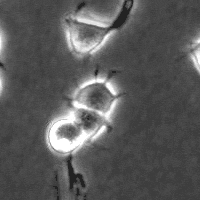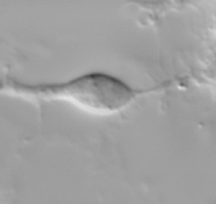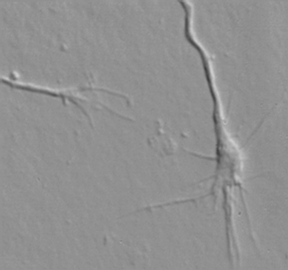Our organization works with the most advanced methods in the world to provide solutions for Attention Deficit Hyperactivity Disorder (ADHD) and other learning difficulties.
Unlike drug treatment, we offer permanent solutions. Our treatments are based on the latest discoveries in neuroscience.
The hundreds of children and adults who have undergone the organization’s training process over the past few years are not only deeply satisfied but also delighted with the life changing improvement they’ve experienced regarding their behavioral and cognitive abilities.
The treatment methods used are based on advanced research that has proven how flexible our brain is and its ability to adapt to change, i.e., redesigning and shaping itself. It has already been proven that learning/training causes changes in the structure of the brain, this being the reason why in cases of stroke, functions such as speech or walking, for example, that have been lost, can be restored. In cases of children with ADHD, the neuroplasticity of their young brain can be taken advantage of and reach an average—or even above average—capability.
For the most part of the previous century, the general assumption among neuroscientists was that after a critical period in early childhood, brain structure is relatively unchangeable.
This perception has been proven wrong. The brain is an adaptive organ; it has the special ability to transform and adjust itself while being engaged in cognitive and/or physical activity.
The human brain is a wondrous organ, divided into areas that are responsible for and affect different functions. These areas are not static and can change and improve even in old age.
For example, if someone had an accident where the verbal processing area of the brain was damaged, that person will no longer be able to speak or communicate.
However, with proper exercises, the speech area can be redeveloped (in the same physical area of the brain or even in a different one) and the person can regain their speech ability anew.
It is possible to tangibly see the brain’s capacity for physical change:



Source: University of Victoria Medical Sciences, contrast microscopy
All our treatments are based on this principle of neuroplasticity. We take advantage of the brain’s flexibility in order to develop it and create new abilities within.
NeuroKeshev trains the brain to control its ability to concentrate.
NeuroDinami trains the brain to reduce abnormal neurological activity.
The Cogni-active courtyard trains and strengthens weak areas of the brain through practice that combines physical and cognitive activity.
Cognitive Training train necessary functions in the brain such as flexibility, visual memory, auditory memory and selective attention, for example.
When the cognitive exercises are combined with physical activity (as in the Cogni-active courtyard) the results are multiplied, and since the stimulation of the brain is much more intense, it causes the multiplication and strengthening of connections (synapses) between existing neurons and even more: the creation of new neurons.
The results of these methods are extremely positive and after a series of treatments, most people bridge the gap they had. Generally, a change for the better is experienced, both emotionally and behaviourally, due to an improvement in the brain processes and due to successful experiences that the person starts to live through.

To better illustrate the purpose of these treatments, we can understand the structure of the brain as made up of a pyramid of functions. This pyramid is built-up on a base of elemental functions that are the basis of other ones that are more complex. Near its top lie the most complex functions—the higher the level of complexity of the function, the closer it is positioned to the pyramid’s apex.
For example: reading and writing functions have a very high level of complexity and are based on many lower functions such as visual perception, auditory perception, analytical analysis, synthesis (binding different data and their context) and much more. Often, identifying a problem at the base level of the pyramid and treating that specific problem, can have a ripple effect upwards and directly solve a problem at a higher level of the pyramid. Let’s imagine a situation in which a child has difficulty learning to read. Sometimes we invest a lot of effort into intensive—and repetitive—memorization while in a considerable number of cases this obstacle depends on one of the basic functions of the brain (mentioned above) that happens to be performing poorly. To the untrained observer this seems strange and unrelated but practicing a certain simple ability with the child will sometimes open the door to a rapid and unexpected development and their ability to read will change beyond recognition.
Training our brain is just like physical training: the less developed the body is, the more it needs training (physiotherapy). Additionally, not only does an impairment make a person need physical training; even a healthy person will significantly improve their body’s and physical abilities with training and physical exercises.
Similarly, training the brain is something that is very helpful, for it optimizes the brain’s thinking activity and abilities, and it can improve its processing speed and accuracy.
There are people who are healthy in terms of their thinking competence; i.e., they are always able to concentrate even if there are disturbances around that could sidetrack them. For them, brain training will significantly add to and improve their abilities, even though they don’t need it.
On the other hand, there are people of all ages for whom brain training is critical! Their inability to concentrate is the main cause of their failure in class and their studies or their work. In children, the lack of attention causes them to accumulate educational gaps which always result in a withdrawal with emotional or behavioral consequences (children who do not do well in their studies often find themselves arguing with the teachers and even their peers, and so their social status may drop significantly). As a result, they are at risk of dropping out from the educational framework.
There are children, teens and adults whose capacities are good and even have positive inner values and talents that are not less than their peers’, but while they appear to be part of their group, they are actually outside of the social circle. Our treatment has proven its efficacy in helping hundreds of people who, as a result, have undergone a significant change, and thus improving their cognitive, emotional, social and behavioral abilities. In children, we often witness them becoming the most successful students in the class.
The uniqueness of our treatment ensures that no impairment, nor any damage can possibly arise from it. Even children with a lesser degree of Attention Deficit Hyperactivity Disorder (ADHD) can significantly improve their abilities within a few training sessions.
כתבו לנו פה, ואנו כבר נדאג ליצור אתכם קשר
פענוח מדויק של מבדקי מוקסו ינתן אך ורק על ידי איש מקצוע מוסמך.
בכל מקרה, מבדקי מוקסו אינם תחליף לאבחון מקצועי, אלא כלי עזר באבחון מקיף.
הדוגמאות המוצגות באתר הינם להעשרת הידע בלבד.